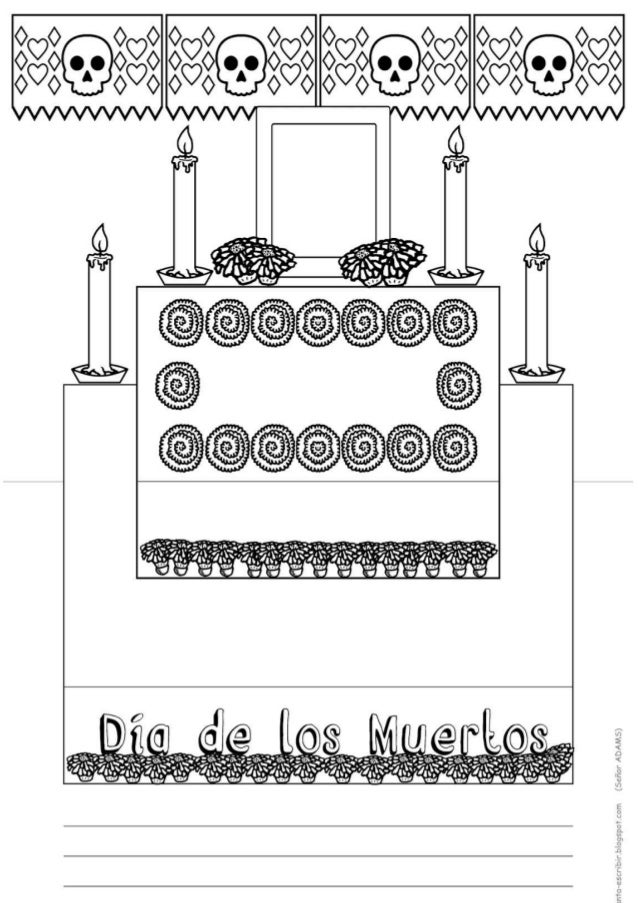


Some are covered in ribbons and icing, others are dipped in glitter and decorated with bright adornments like hats and bows. His or her name is written on the sugar skull’s forehead and, depending on the age of the deceased, the size of the skull might vary - baby skulls are dedicated to those who passed at a young age and larger skulls are for adults. Propose a toast to those who have passed and ask people to share their memories. Decorate with pots filled with marigolds and papel picado. There are resources for teachers too Some of the resources include a user guide and lesson plans for grades K-2 and grades 6-8. Students also have an opportunity to build their own digital altars. Serve tortilla soup, tamales, chicken mole, pan de muerto and caramel flan. This interactive website allows students to click on different tabs to learn about the customs and beliefs about Día de los muertos. “…skulls are placed as decorations to recognize the person who has passed. Invite friends and relatives for brunch or dinner. These calaveritas can be placed on the altars created in memory of family who has passed on, or they can be gifted between family and friends as well. One of the most iconic images for Día de los Muertos are the sugar skulls, or calaveras in Spanish. These are sometimes literal sugar skulls, mini replicas made out of sugar. Altar Anticipating visits by the spirits of their deceased relatives and ancestors, family members construct altars in their homes.
#Dia de los muertos altar coloring page professional
Instead, bright, vivid colors are a staple of Day of the Dead images and decorations. El Día de los Muertos Professional Development Workshop October 2010 Vocabulary Classroom Activities Resources. 1 and 2 is a moment in time to honor your ancestors and those in your family and community who have gone into the spirit. It stems from pre-Hispanic traditions of honoring ancestors and their ongoing presence in the life of the living, and was later mixed in with the Christian customs brought by Spaniards.Īlthough it’s sometimes confused with Halloween since it falls on November 1 and 2, the meaning behind Day of the Dead is very different! It’s not meant to celebrate spooky or scary things, but rather celebrate the lives of those who have died. Even though you’ll see many symbols of death like skulls or graveyards, those things are not meant to communicate fear or darkness. A: Da de los Muertos, the way we celebrate it here in the United States, emerged in Mexico, and it has had many evolutions over the course of 3,000 years in terms of what we understand it to be today. Inside: Sugar skull coloring pages and more printables for Day of the Dead.ĭay of the Dead is one of the most well-known holidays in Mexico, and also celebrated in many parts of Latin America.


 0 kommentar(er)
0 kommentar(er)
